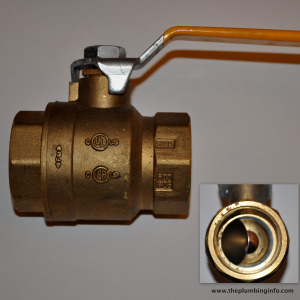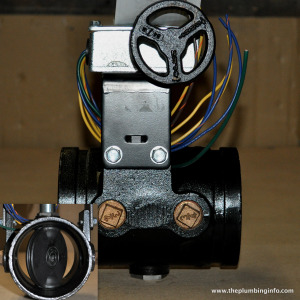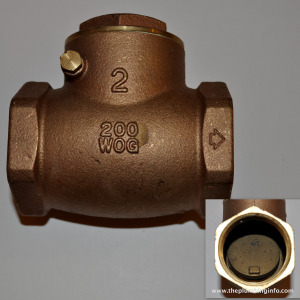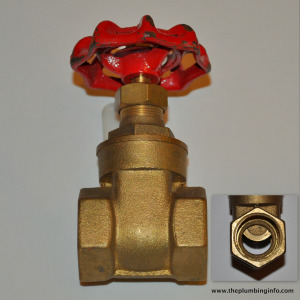What Are the Different Valves Used In Plumbing?
Plumbing valves, which control how liquid passes from one pipe to another, can be found throughout a home. While there are several different types that are typically used, some of the most popular include ball, butterfly, check and gate valves. Here is some information on commonly used valves and their different applications.
Ball Valves
 A ball valve is very reliable and used in a variety of residential applications. It contains a ball with a hole through the middle that fits inside a pipe. The valve closes when the hole is perpendicular to the flow of liquid. When the hole of the ball is parallel to the pipe, the valve opens. A handle is used to control whether the valve is open or closed.
A ball valve is very reliable and used in a variety of residential applications. It contains a ball with a hole through the middle that fits inside a pipe. The valve closes when the hole is perpendicular to the flow of liquid. When the hole of the ball is parallel to the pipe, the valve opens. A handle is used to control whether the valve is open or closed.
Ball valves are made of several different materials, including bronze, steel, plastic, brass and iron. They are good for stopping the flow of water in the event of a plumbing emergency, such as a broken pipe.
Butterfly Valves
 A butterfly valve typically has a spring-loaded handle that can lock into a desired position, and is especially effective for use in tight spots. It is also operated via a lever, but a butterfly-valve lever is connected to a disc located inside the pipe rather than a ball. When closed, the disc blocks water flow. When the lever is open, the disc dislodges and allows water to move through the pipe. In most instances, a butterfly valve will reduce the pressure of the water that flows through it.
A butterfly valve typically has a spring-loaded handle that can lock into a desired position, and is especially effective for use in tight spots. It is also operated via a lever, but a butterfly-valve lever is connected to a disc located inside the pipe rather than a ball. When closed, the disc blocks water flow. When the lever is open, the disc dislodges and allows water to move through the pipe. In most instances, a butterfly valve will reduce the pressure of the water that flows through it.
Butterfly valves are also commonly used as shut-off valves throughout a home’s plumbing system. They are also often found in vehicle carburetors, fire hoses and even hydroelectric power stations.
Check Valves
 A check valve is used to make sure that water flows in only one direction. There are three types of check valves: ball-check valves, diaphragm-check valves and stop-check valves. The first two use a ball or piece of rubber to seal water so that backflow does not occur. They activate when water tries to flow the wrong way. A stop-check valve, on the other hand, is operational, meaning that a user can decide whether to stop water flow in both directions or to keep it from flowing backward.
A check valve is used to make sure that water flows in only one direction. There are three types of check valves: ball-check valves, diaphragm-check valves and stop-check valves. The first two use a ball or piece of rubber to seal water so that backflow does not occur. They activate when water tries to flow the wrong way. A stop-check valve, on the other hand, is operational, meaning that a user can decide whether to stop water flow in both directions or to keep it from flowing backward.
Check valves are used in many different ways, such as keeping sewer water from backing up into a home. They are also used in drip irrigation and sprinkler systems to keep lines from draining when they are shut off.
Gate Valves
 Gate valves use a gate controlled by a wheel to control the flow of water through a pipe. Many outdoor spigots, for example, use this type of valve, with the wheel either raising or lowering the gate to allow or prevent water movement. When the gate is raised, water flows freely. When it is lowered, water cannot move through the pipe. While gate valves typically do a good job of maintaining pressure and reducing leakage, and are also reliable and easily installed, they may seize if not used for an extended period of time.
Gate valves use a gate controlled by a wheel to control the flow of water through a pipe. Many outdoor spigots, for example, use this type of valve, with the wheel either raising or lowering the gate to allow or prevent water movement. When the gate is raised, water flows freely. When it is lowered, water cannot move through the pipe. While gate valves typically do a good job of maintaining pressure and reducing leakage, and are also reliable and easily installed, they may seize if not used for an extended period of time.
In addition to outdoor spigots, gate valves are commonly found in household sink faucets as well.
Choosing the Right Type of Valve
As you can see, different valves are used in different ways, which can be confusing for many people. If you are planning a home improvement or other type of do-it-yourself project, it is very important that you get the correct valve for the job.
While your system may still work if you install the wrong type of valve, the valve may not last as long as it should, or it may not control the flow of water exactly as you want. Instructions should be provided that will show you the specific uses for each type of valve you are considering, but you may want to speak with a plumber to be sure you are choosing the right one.
Valves are available in a wide variety of locations, including hardware, plumbing and home improvement stores. You can also order them online if you wish. Just make sure you not only order the right kind of valve, but the right size and connection type as well.
Author Bio:
Amanda Hill is the content manager at PVC Fittings Online, a leading supplier of plumbing supplies, including True Union Ball Valves, for commercial contractors. Amanda is known as the Queen of PVC due to the wide range or PVC topics she has written on in the past.